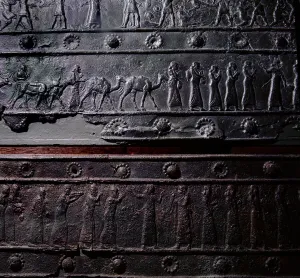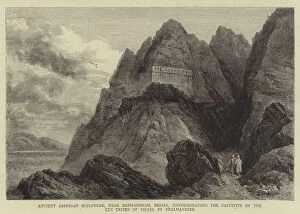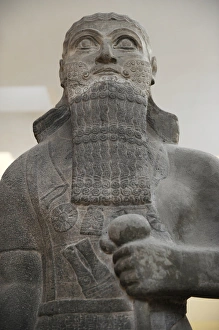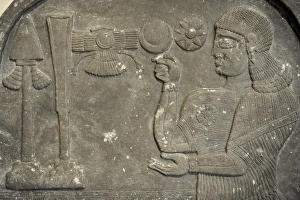Shalmaneser Collection
"Unveiling the Legacy of Shalmaneser: A Glimpse into Ancient Assyrian Power" Step back in time and explore the fascinating world of Shalmaneser
All Professionally Made to Order for Quick Shipping
"Unveiling the Legacy of Shalmaneser: A Glimpse into Ancient Assyrian Power" Step back in time and explore the fascinating world of Shalmaneser, an influential Assyrian king who reigned from 858 to 824 BC. Through remarkable artifacts such as the Stele with relief depicting Assyrian official Bel-Harran-bel and the Statue of King Shalmaneser III, we gain insight into his reign's grandeur. One notable testament to his power is found in the Balawat gates, where wooden doors adorned with bands of bronze relief decoration showcase intricate craftsmanship. These gates stood as a symbol of authority and protection during Shalmaneser's rule. The ancient Assyrian sculpture near Kermanshah, Persia, commemorates a significant event – the Captivity of the Ten Tribes of Israel by Shalmaneser. This engraving serves as a reminder that history often intertwines different civilizations and their struggles. Archaeological discoveries in Iraq have shed light on Assur, one of Shalmaneser's prominent cities. The stele with relief depicting Assyrian official Bel-Harran-bel provides valuable information about administrative practices during this era. Venturing beyond borders, rock reliefs along Dog River in Lebanon depict scenes associated with Shalmaneser's conquests. These carvings offer glimpses into military triumphs and territorial expansion under his leadership. The enigmatic Black Stele further adds to our understanding of this powerful ruler. Discovered amidst archaeological excavations in Kalhu (modern-day Nimrud), it bears inscriptions detailing victories achieved by Shalmaneser throughout his reign. As we delve deeper into history, we uncover tales that resonate even today – stories of ambition, power struggles, and cultural exchange. Join us on this journey through time as we unravel the captivating legacy left behind by King Shalmaneser, a ruler whose influence shaped the ancient world.









